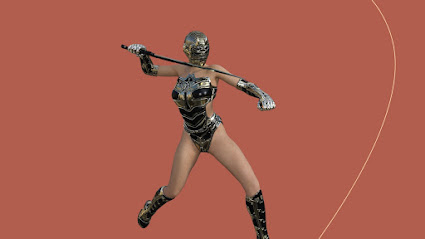What Do You Think We Should Do Next to Make Music? (Blog 8)
As I think about makerspaces, I reminisce
about my childhood. My cousin had gotten
a one-cassette radio for her birthday from her dad and her mom got her a pack
of cassette tapes. She and I wrote the
lyrics to popular songs and then we would record ourselves singing the songs. We would play back our recordings and record
over them until we heard it the way we thought it should be. I remember we popped
a few cassette tape ribbons, but we figured out that a little piece of
invisible tape mended the tape ribbon and it ran over the reel just fine. This was our own made up preservation effort that
worked time and time again. An ode to
the Thomas Makerspace!
We did not know how to use the fast-forward and the rewind functions until we tried them out. Once we did, we auditioned to became superstars! We critiqued each other’s renditions from our own star-studded rubric. As Moorefield-Lang (2014) argued, we were engaged in experimentation, used problem solving techniques, and participated in peer-to-peer interaction in making music production! We were hoping that we could one day be on Star Search. Today’s American Idol and The Voice might be the gateway to stardom these days, but back-in-the day, Star Search was the reality competition show that would get us to the grand stage. Some famous celebrities who got their start on Star Search are Justin Timberlake, Beyoncé, Christina Aguilera, and Usher.
In her blog, Shannon McClintock Miller expresses how she started with a Makerspace-on-the go to present how music can be that creative space to encourage engagement in young people. She had stuff like markers crayons, wooden beads, glue, pipe cleaners, and popsicle sticks. She wrote about it here:
She created a Makerspace Mobile out of apps on her iPad and iPhone. She also downloaded ebooks that the kiddos can use. She used more apps and used the digital platform Symbaloo to create the Music Fun for Kids Symbaloo. Then, she added this to the Makerspace Symbaloo. The young people can create instruments using the ideas she provided on the Homemade Musical Instruments Pinterest Board. Here is her blogspot with all these wonderful creations for her music makerspace:
Is There A Place for Music in Our Makerspaces?
After
reading the research by Moorefield-Lang (2014), I realized that the Richland
Public Library that I frequented so much in Columbia, SC was a featured library
in the study. At that time, they had a
makerspace called the Creative Lab, a recording studio for sound and music. It had computers with Adobe Creative Suite,
traditional art supplies, and Ready Animator for stop motion style filming. They offered workshops where young people
learned to create their own animated narration video. All in all, the Creative Lab allowed young
people “to create, build up, break down, and if necessary, try again” (p.
588). This is exactly what my cousin
Melissa and I did back in the 80s when we were in our own makerspace, which was
so much fun and excitement.
Since
Moorefield-Lang’s (2014) research study, the Richland County Public Library has
gone through a renovation and has revamped their music makerspace, and the
Creative Lab no longer exists. After
reaching out to Kelsey Truluck, I discovered that the RCPL has added more
makerspaces, but now offers the following music makerspaces for their young adult
library patrons on the second level of the main library:
- Production Stage: Canon t7i DSLR camera, lighting equipment, photo
backdrops, sound isolation booth, condenser microphones, green screen wall
- Post-Production Lab: 3 Macs and 3 PCs with Adobe Creative Cloud (Photoshop, Illustrator, Premiere, etc.), Ableton Live, Unity game engine
Additionally, they relaunched Library of Things, which is an extension of their makerspaces, including the music makerspaces. Library patrons can take the makerspaces and studios on-the-go by renting their quality equipment. They are destined to capture entrepreneurs in the making!
References
Britton, L. (2012, October 2). The
makings of maker spaces, part 1: Space for creation, not just
consumption, Library Journal.
https://doi- http://www.thedigitalshift.com/2012/10/public-services/the-makings-of-maker-spaces-part-1-space-for-creation-not-just-consumption/
Makerspace Playbook. School Edition
(2013). https://makered.org/wp-content/uploads/2014/09/Makerspace-Playbook-Feb-2013.pdf
Miller, S. M. (2014, December 6). I created
a little makerspace to go . . .It even include a makerspace mobile too! The Library Voice Blog. https://vanmeterlibraryvoice.blogspot.com/2014/12/i-created-little-makerspace-to-goit.html
Miller, S. M. (2015, February 22). Is there a place for music in our makerspaces?
The Library Voice Blog. https://vanmeterlibraryvoice.blogspot.com/2015/02/is-there-place-for-music-in-our.html













Hi Pamela,
ReplyDeleteI enjoyed reading your thoughts and flashbacks about creating a makerspace for music. As you mentioned, the Richland Public Library is doing amazing things to foster creativity and creation though music. I thought about how this idea might work in my middle school. My students are always listening to music and some students may have an interest in writing and recording their own lyrics. How can this be done on a budget in a middle school library and where space maybe limited? CDunagan (2012), gives us step-by-step directions on how to create a “mini sound booth” with an old paper box, egg crate foam, adhesive spray, computer, and a glue gun. Check on the article: Sound Booth on the Cheap. I love that creating a makerspace in your library does not have to cost a fortune (you can even help the environment by recycling items that may be deemed as trash), neither does it have to take up a lot of precious space. It just takes a bit of research to figure out the needs and passions of your patrons and some creativity.
- Richelle Sexton -
Reference
Dunagan, C. (2012, October 12). Sound booth on the cheap. Discovery Education.
http://blog.discoveryeducation.com/blog/2012/10/12/soundbooth/?utm_source=feedb
urner&utm_medium=feed&utm_campaign=Feed:+DEN+(Discovery+Educator+Networ
k)&utm_content=Google+Reader
Hi Richelle—
DeleteAs I read through the readings and looked at the videos, I caught on that a makerspace can be anywhere. I realized at that moment that, hey, I made my own makerspace right at my grandmother’s house. I got so excited that I had to share. It is good to know that you find my story interesting. I truly understand the concern about budgeting and spacing. I think you can get started with what you have and build as you go along. There are household items we throw away that do not cost anything because they are a part of the products that we purchase for use. Some things that you can start collecting are toilet paper and hand towel tubes, ice cream containers with screw on-and-off lids (i.e. Talenti), sour cream tubs, your least favorite spoons in the drawer, just to name a few. A great way to start is ask parents to donate the items and get the children in on it too. They will remember to save those containers and items for use in your makerspace. You could even make it into some type of incentive program for the students who bring in the items. Also, this could be tied into science and social studies with the aspects and impact of recycling. For space, I have noticed some recommendations to use tubs or containers to hold the items. A good thing is you can stack tubs to save space. With the stacking mechanism, they can be out of sight, out of mind until you need them.
Submitted by Pam Thomas
Hi, Pam! Oh my goodness! My cousin and I used to record ourselves singing songs from the movies we liked such as Grease 2. We even made up commercials for products around the house such as toothpaste. I have not thought about those old cassette tapes in years. To be sure, children in my day were creative because we didn't have as many toys and we definitely didn't have all of the electronics available today. I do feel that children today are also creative, but often they don't have the opportunity to explore that creativity. I love that makerspaces can be anywhere and use any materials. I've actually saved some old, broken cameras at school and thought I'd let students take them apart and explore what's inside.
ReplyDeleteHi, Pam,
ReplyDeleteI cannot tell you how much I enjoyed reading about your experiences as a recording artist when you were younger. Your stories made me so happy, it sounds like you had so much fun with your cousin! And your stories and the blog that you shared for this week really got me thinking about music in the makerspace, too! The arts have always been a big part of my life and the lives of my family--we were all art kids, of sorts, throughout our school years. My brother and his wife are both middle school music teachers currently--he teaches all sorts of music classes from guitar (his specialty) to to theory, and she teaches choir. Now I have so many ideas to share with them both, about new ways to incorporate music technology into their classes, and possibly even suggestions on how to forge a learning partnership with their school librarians on creating a music makerspace once they are back in their schools! My brother, in particular, has expressed an interest in teaching students about music technologies and the recording industry over the past couple of years, even going so far as to design a rough outline for a class during his recent job search--I'm going to have to let him know about some of these resources, especially the apps, to see what he can use with his students now! Thanks for an awesome (and truly inspiring) post!
Tiffany Alley